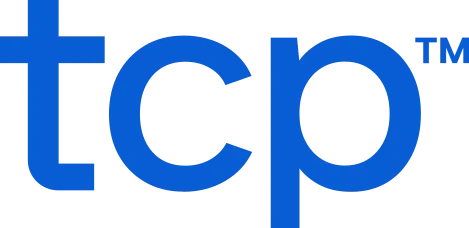If you’re a small business owner, you have your fair share of good days and bad. Imagine this:
It’s 98 degrees. Your pizza food truck is at the biggest summer festival in your city, with a line stretching halfway around the block. The smell of burnt crust fills the air, the generator randomly quits. Two team members have called in sick, and your backup cashier didn’t realize they were scheduled — because they weren’t.
You’re sweating through your shirt, the crowd is restless, and social media is lighting up with photos of long wait times and complaints about your service. And to top it off, you notice the city’s health inspector jumping into other food trucks for a surprise inspection, and you’re next.
For many small business owners, a day like this is just all in a regular work week. But too often, chaos like this is made worse by outdated scheduling methods — spreadsheets, sticky notes, or last-minute texts. And while those might feel “good enough” for a small team, they come at a cost: employee frustration, poor service, and missed revenue. Small or not, your team still wants clear, reliable scheduling. Your customers still expect great service. And your business depends even more on keeping labor costs under control.
So you might be wondering, “Is there really a solution that fits my small business?” The answer is yes. No business is too small for a smart, reliable scheduling program. Today’s tools are more accessible and affordable than ever, designed to give your small business the same advantages as larger organizations — without the complexity.
In this guide, we’ll explore why traditional employee scheduling for small business methods fall short, what modern, yet simple scheduling software can offer, and how to evaluate the right solution for your team’s unique needs.
Small business scheduling challenges
Running a small business means being everything, everywhere, all at once. You’re handling customer issues while juggling inventory, balancing the books, and checking in on your team. Scheduling shouldn’t be the thing that breaks your stride, but for many small business owners, it’s one of the hardest parts of the job.
Running a small business is tough — managing your team shouldn’t make it harder
When schedules go sideways, they affect everything. A no-show can throw off your entire day. An understaffed shift can lead to delays, disappointed customers, and a frazzled team.
If you’re constantly putting out scheduling fires, you’re not leading — you’re just surviving. Before diving into solutions, it’s important to understand how much is at stake when employee scheduling fails.
Behind the scenes, the human toll is just as real:
- Managers burn out – Juggling last-minute changes with little warning
- Employees feel frustrated – When they’re overworked or left guessing
- Businesses lose money – When operations can’t keep pace with demand
While enterprises may technically lose more people due to scheduling mistakes, the impact of a poor scheduling program is felt much sooner for small businesses. If you run a small business, you know one person truly makes a difference.
So how does the status quo continue to fail small business operators?
Why traditional employee scheduling methods fall short
Many small businesses still rely on paper schedules, timesheet templates, or group texts. These methods might feel familiar, but aren’t built for speed or change. Manual scheduling processes can’t keep up when things shift (and they always do).
Even minor issues quickly snowball into big ones. Without clear communication or real-time updates, coverage gaps go unnoticed. Overstaffing inflates labor costs, while understaffing causes chaos on the floor. Add legal compliance — like overtime rules and required breaks — and the risks rise even higher.
What starts as “just a simple schedule” can turn into a daily headache:
- Mistakes add up – Manual scheduling opens the door to costly errors, like double-bookings, missed shifts, or overlooked time-off requests.
- No visibility – Without a centralized view, managers can’t easily spot coverage gaps or see who’s available in real time.
- Communication breaks down – Relying on last-minute texts or phone calls creates confusion and leaves some employees out of the loop, leading to no-shows, tardiness, and last-minute callouts.
While the direct impact of poor scheduling is clear, the ripple effects — from lost productivity to lower morale and dissatisfied customers — can quickly take a toll on your small business and factor into decreased employee retention rates.
The hidden cost of bad small business employee scheduling
Scheduling program slip-ups aren’t just internal problems. They hurt your bottom line. Customers walk away. Good employees quit. And you spend hours fixing issues that should’ve been avoided in the first place.
Let’s zoom in on a retail example.
Imagine you run a small clothing boutique that does 60% of its business on weekends. But on Saturday, your most experienced sales associate — the one you never have issues with — is a no-show. There’s no backup plan.
Your junior associate is overwhelmed, inventory is piling up behind the register, and several walk-ins leave because they can’t find anyone to help them. Yes, it’s lost revenue, but also lost trust.
Later that week, you spend two hours manually calculating payroll, only to discover you underpaid an employee who stayed late to cover part of that chaotic shift. You make the correction, but not before they grow frustrated. Now morale is shaky, and your team’s confidence in the schedule (and you) has taken a hit.
Bad employee scheduling creates a domino effect, and one that’s hard to stop once it starts:
- Missed revenue opportunities – Understaffed shifts mean slower service, lost sales, and customers who don’t come back
- Employee dissatisfaction – Inconsistent schedules make people feel undervalued and overworked
- Administrative burden – Time spent troubleshooting schedules could be spent on managing the business better
What modern scheduling software for small businesses brings to the table
Who doesn’t want to eliminate the stress, confusion, and wasted time from poor scheduling? The right scheduling software for small businesses is a step in the right direction.
When you’ve got confidence in your system, you’re not wondering who’s on the clock or scrambling to rework a shift. Everything’s in one place and updated in real time, so you can lead your team with confidence instead of reacting to problems all day.
Before we dive into the features, here’s why dedicated employee scheduling software makes a difference:
- Clear visibility – See the full schedule at a glance, from shift coverage to last-minute changes.
- Automation – Eliminating time consuming tasks for building and updating schedules.
- Mobile access – Your team can check schedules, swap shifts, and get notifications from their phones.
- Compliance – Set automatic overtime and break rules to keep your business protected.
TL;DR – You’ll spend less time stuck in scheduling program logistics and more time doing what matters most — running and growing your business.
Employee scheduling features that actually move the needle for small businesses
Not all scheduling software is created with small businesses in mind.
Some tools are packed with features but require hours of training just to get started. Others are designed for enterprise level complexity and size. The best tools for small businesses are simple, easy to adopt, and solve your everyday problems. You need to get more done with fewer headaches, because as a small business owner, you don’t have time to wrestle with clunky dashboards or outdated tech — the right employee scheduling software will reflect that:
Mobile-first tools
Small business scheduling software should meet your team where they are — on their phones. In a world where you can run a small business on a smartphone, employees should be able to check their shifts, confirm assignments, and request changes without logging in from a desktop or physically being in front of a posted paper schedule.
No more calls or texts asking, “When am I working again?”, which means better engagement from your staff. Managers deserve the same convenience, with mobile access making it easy to adjust staffing in real time, whether you’re on-site or off the clock.
Flexibility keeps your operations running, without being tied to a desk or printed schedule.
Automatic shift conflict detection
Nothing wastes time like chasing down and manually correcting shift overlaps, or assigning someone already maxed out on hours. Automatic conflict detection keeps this burden off your plate.
The system reviews each shift as you build it, flagging issues like double-bookings, overtime violations, and coverage gaps before the schedule is published. No more last-minute surprises, fewer scheduling program disputes, and no issues complying with labor laws.
Built-in communication
Built-in messaging keeps everyone on the same page without a messy stream of texts, emails, or social DMs. Built-in notifications update employees the moment a shift changes or a new schedule is posted.
In the same place, employees can respond to requests, swap shifts, or ask questions, cutting down on miscommunication and missed shifts — managers get an easy way to reach the whole team with announcements or updates. As a bonus, some employee scheduling software holds a digital trail of conversations, which helps confirm changes or resolve disputes.
Time tracking integration
Accurate time tracking is critical for payroll, compliance, and budgeting, and when it’s integrated directly into your scheduling software, it reduces the chance of error. Employees can clock in and out using the same app to view their schedules, creating a seamless experience. This data syncs automatically to your payroll management system, eliminating the need for manual calculations or spreadsheet exports. Time tracking is also a deterrent for time theft (early punch-ins, late clock-outs, long breaks, etc.).
The result —fewer payroll errors, greater confidence in your reporting, and more time saved during every pay cycle.
Forecasting & reporting
Good employee scheduling software is present-thinking. But great employee scheduling software is future-thinking. Forecasting features analyze past sales, seasonal trends, or foot traffic to recommend smarter staffing levels.
Schedules become about what your small business actually needs, not just guesswork to fill a calendar. Real-time reports can help you monitor labor costs, overtime trends, and employee performance to inform this forecasting too.
Whether you’re prepping for a holiday rush or a slow season, data-backed scheduling keeps you lean and profitable.
How to choose the right employee scheduling software for small business
Choosing the best small business employee scheduling software comes down to one question: Will this make my life easier?
You don’t need all sizzle and no steak — the tools should work fast, be intuitive, grow with your business, and solve your real daily problems. So, here’s the functionality that matters to your team.
What to look for:
- Simplicity – You and your team should be able to learn it in minutes
- Scalability – Whether you have 5 or 50 employees, it should adapt
- Integrations – Syncs with payroll, POS, or HR systems
- Affordability – Transparent pricing that fits your budget
The best tools keep things simple, scale with you, and easily connect within your team’s workflow — so you can focus on managing, not troubleshooting.
Red flags to avoid:
- Complicated setups that require IT help
- No mobile access for staff on the go
- Fine print with extra fees or limited support
If a solution adds too many bells and whistles, costs more than expected, or limits access, it’s a sign to keep looking.
5 questions to ask before you decide:
- Will my team use this?
- Can I adjust shifts and notify people instantly?
- How quickly can I build and publish a weekly schedule?
- Does it integrate with my current tools (if applicable and/or ready for other tools)?
- What kind of support is available if I need help?
The answers will tell you if the software is a true fit, or if the juice isn’t worth the squeeze.
Comparing your options — What kind of scheduling tool is right for you?
There’s no shortage of scheduling software options out there, but not all of them fit the unique needs of small businesses. Here’s a quick breakdown:
1. Spreadsheet or timesheet-based tools
Online timesheets (software or templates) are free and flexible but require manual entry and constant upkeep. Great for ultra-small teams, but they don’t scale well or support real-time updates.
2. POS-connected scheduling systems
Some point-of-sale platforms offer basic scheduling features. They’re convenient for retail or hospitality but often lack compliance features like setting schedule rules for overtime or meal and break rules
3. Dedicated scheduling apps
Purpose-built tools give you the features you need most, such as mobile access, conflict detection, and employee self-service. These tools strike the best balance of automation, customization, and usability for small businesses.
4. All-in-one workforce management platforms
These offer deep functionality, including HR and payroll integration. They’re ideal if you’re growing fast, but may be overkill for smaller teams or single-location shops.
When evaluating options, consider your immediate pain points and how quickly the tool can solve them.
How employee scheduling software helps small businesses win
Remember our summer festival pizza food truck example? Imagine this time, you’ve got a whole crew. Everyone knew their shifts, got reminders, and checked in from their phones. Your team is moving smoothly, your customers are smiling, and you’ve already broken your daily sales record by 2 p.m.
That’s the difference a great schedule can make.
With the right scheduling software for small business, these kinds of days aren’t flukes — they’re your new normal:
- Happier employees – They know what to expect and feel supported
- Smoother operations – Less confusion, fewer surprises
- Better customer service – A well-staffed team delivers faster, more reliable experiences
- More time to grow – You can focus on expansion, not shift swaps
Ready to make employee scheduling the easiest part of your week?
Nobody starts a business because they love spreadsheets. The right employee scheduling for small businesses frees you up to focus on what really matters — your people, your customers, and your growth.
We’ve got the tools to help you efficiently manage your staff, track time, and oversee labor costs. No more time-consuming spreadsheets and depending on manual processes.
Visit our small business solutions page to check it out.
TCP Software’s employee scheduling and time and attendance solutions have the flexibility and scalability to suit your organization and employees as you grow.
From TimeClock Plus, which automates even the most complex payroll calculations and leave management requests, to Humanity Schedule for dynamic employee scheduling that saves you time and money, we have everything you need to meet your organization’s needs, no matter how unique.
Plus, with Aladtec, we offer 24/7 public safety scheduling solutions for your hometown heroes.
Ready to learn how TCP Software takes the pain out of employee scheduling and time tracking? Speak with an expert today.
What to read next
Explore all resources


